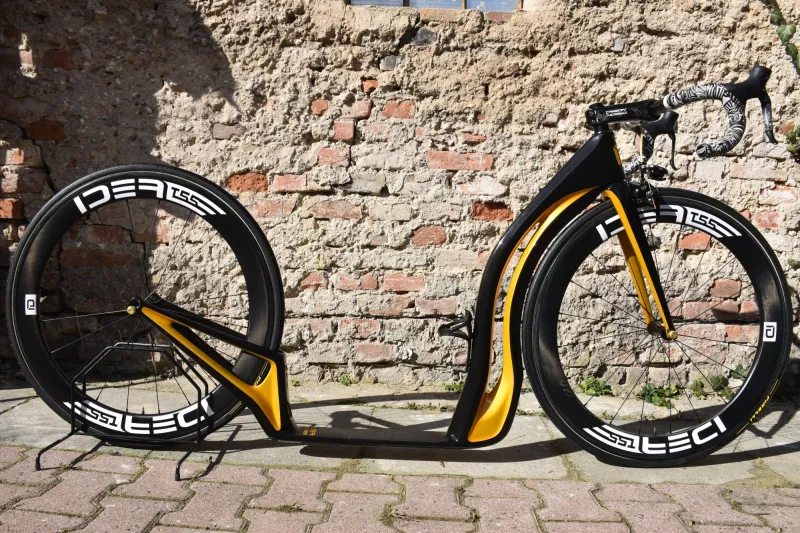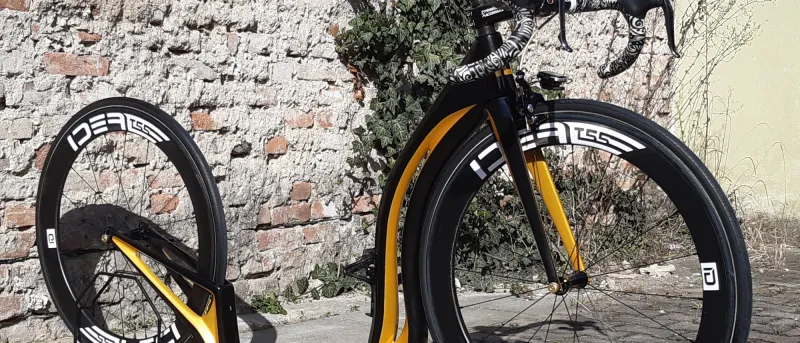
Gravel bars theory
On the beginning was a – stick, stick, stick, stick. And bar ends. We are talking about big footbikes, big boom after Kick France 2013, where was thru the winter acceleration of number big footbikes from 5 to 30 pieces. Carbon wheels, tubulars, everyone starts to take it seriously. Flat bars with bar ends, wide about 60cm. On the beginning not everytime good combination of brake levers and brakes. But stability, smooth service, endless possibilities of grips. You can use several types of extensions, lights, holders, what do you want.
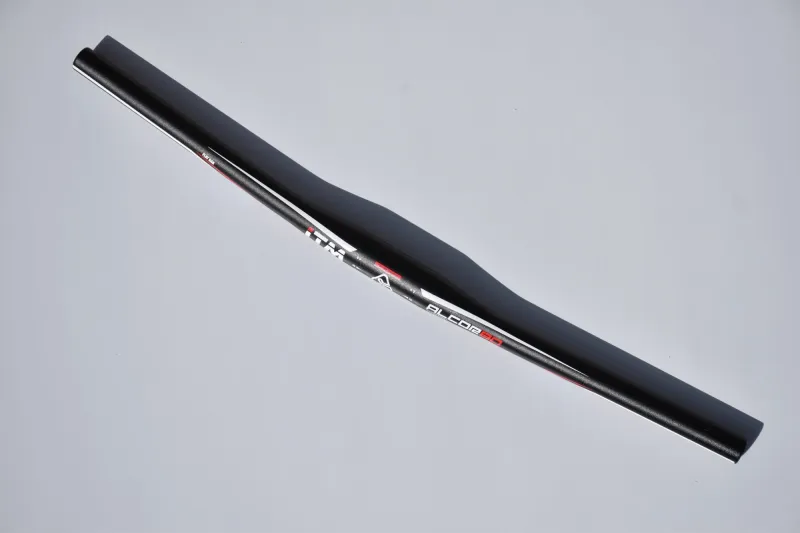
flat bars
Then comes time of triathlon/tt (tt - timetrial). Combination with additional lever more or less necessary, different shapes. Demands on piloting skills a bit more. Finding the right brake levers, stretching the bowden, all fun. The tt handlebars can increase the rider's space more than with straight handlebars, but a lot of pressure on the palm placed on the narrow handlebar tube can cause quite unpleasant pain for some. In order to hold the handlebars while riding, you need to grip the handlebars with your hand, which is extra effort and activity. Loosening your grip can cause your hands to slip forward. Also, they don't make them extra wide and if they aren't far enough away, space for the chest and proper breathing is very limited. Longer side grips also push you too far forward and knee room is inadequate.
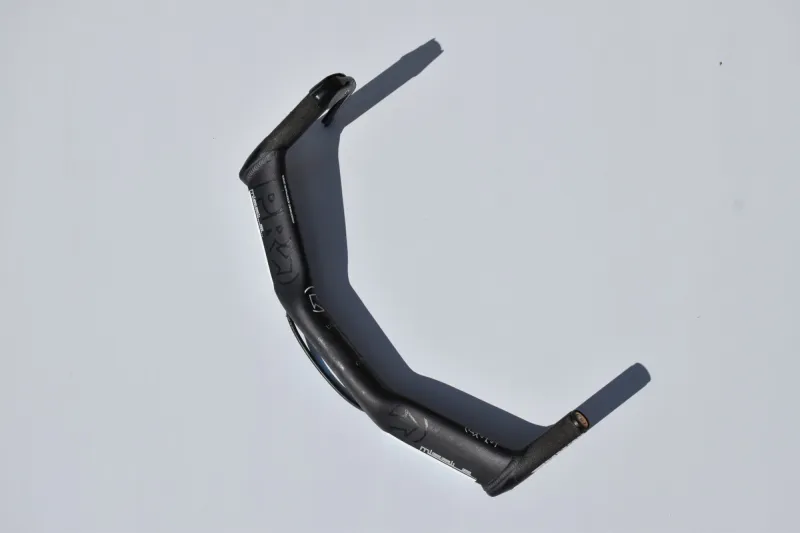
triathlon/timetrial bars
Less then we can see, for example, risers, for road races turned down. A chance to get as low as possible, Dutch style. An option for smaller riders. A common mistake is not turning the handlebars properly, or even turning them completely over.
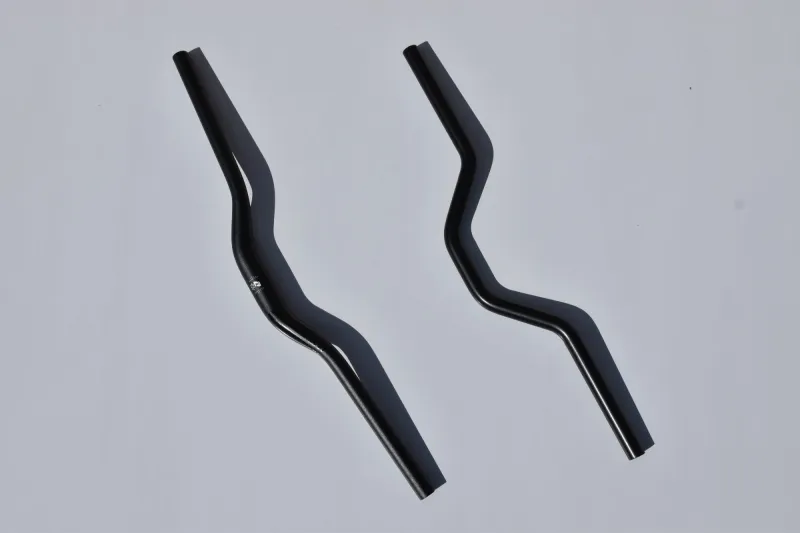
risers
We also have travel handlebars, for example Alpo Kuusisto carries them. And I think he's one of the few who knows why. Knee high up, knee high down. Narrow hips and shoulders, fits in the downhill with the handlebars all packed in, sprinting standing up with the hips. There are a plethora of travel handlebar variations and they definitely don't have horns on them. At least not on their ends. The main weapon of touring handlebars are the grips on the ends, if you feel the need to put horns on there, keep looking for the right handlebars. Travel handlebars reduce rider space to a minimum, which is good for cruising, but has a detrimental effect on sport riding. The knee has to go up perpendicularly for an effective sport rebound, which is quite strenuous and so faster riding is more or less impossible. Except in Alp's style. The aforementioned high knee in the swing and a very strong ankle. How many of you have it?
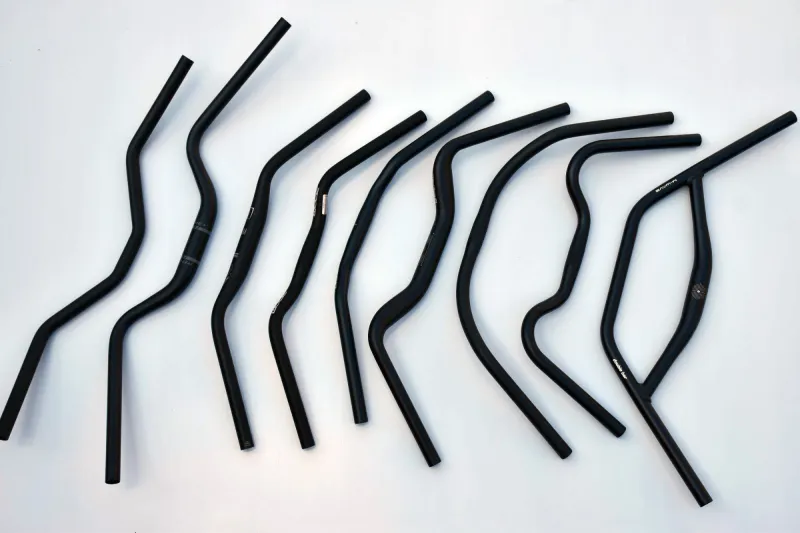
travel bars, city bars
Road curves. Breta Michalek used to drive them on his journeys into the distance. But then a little differently. The ergonomics of handlebars and brake/shift levers have changed a lot over the years. Large diameters for better grip, shaping, sophisticated angles. Passages for internal bowden routing, different material thicknesses for stiffness and flexibility in the right places. If you set them up the same way as on a road bike, you can grip them by the brake levers and by the flat part next to the stem. It's very nice behind the levers and keeping up speed isn't as strenuous. The knee room gets bigger and you don't have to lift it as high for the same range. It's not for sprinting though, the stance is too long and doesn't allow for as forceful a rebound. The grip on the lower ends of the arches is more or less impossible, it's the upper part where you hit your forearm that bothers him.
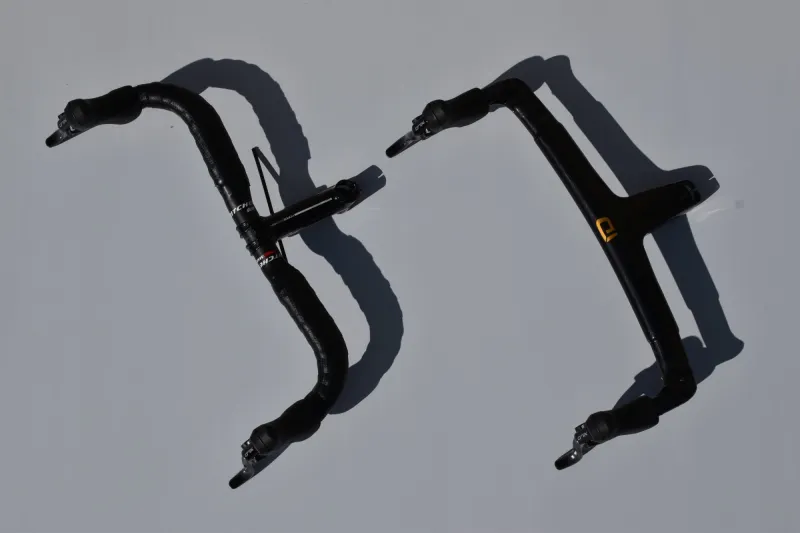
road bars
Gravel handlebars are an offshoot of road handlebars. The specific geometry of the curves, which turn sideways at an angle of 12° or 24°. So while the lower ends of the road arches are unused, the gravel ones allow you to grip very low. Sprints, escapes, headwinds. The things that turn swallows or Dutchmen do.
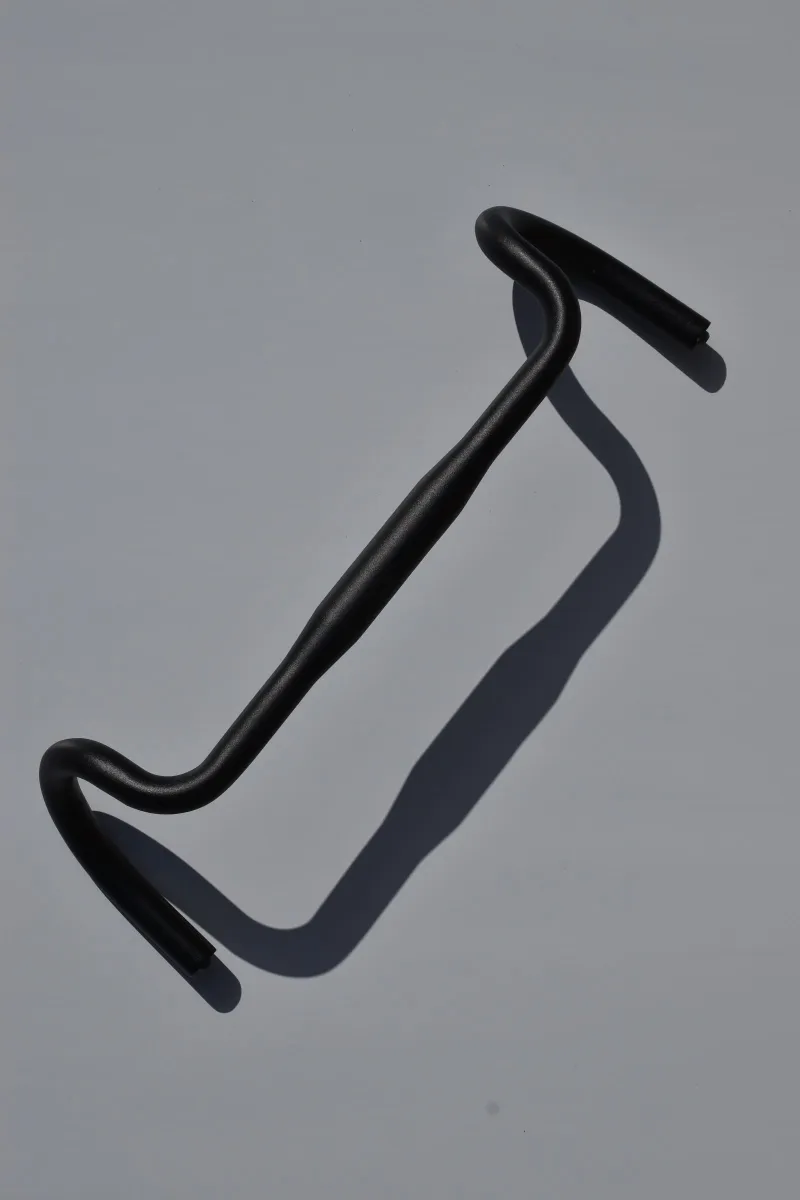
gravel bars
And what is the practice? Very pleasant so far, after all it is not a problem to try them out. You may ask if the combination of such handlebars and levers, both of which are necessary even with one brake - on a racing machine - is too heavy. Compared to straight handlebars with one lever, certainly. However, used on a racing scooter that is typically somewhere under 6.2kg and often even less, and with the options these handlebars offer, it's definitely worth it.
